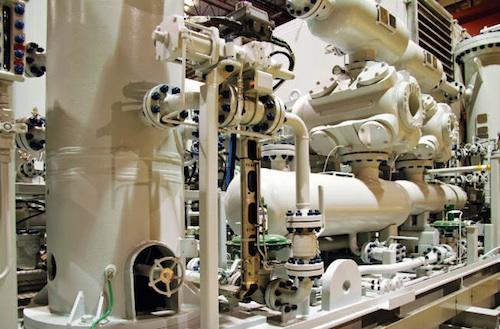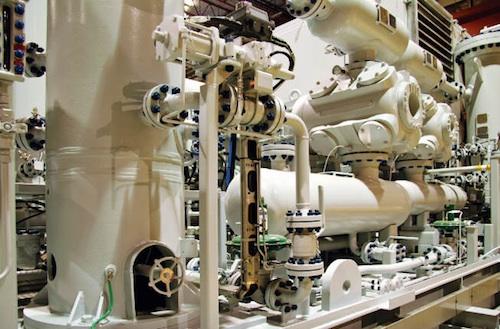Factors to Consider When Selecting a Pressure Sensor
January 28, 2014

Measurement that is expressed in a defined and clear way allows manufacturers to interpret and apply results correctly. In industrial automation and process environments, accurate measurements are essential, as they have a direct effect on the success of the desired outcome. Pressure, or the act of a force on a specified area, is a common measurement used in many industries.
A pressure sensor measures the amount of movement, or deflection, on an area with the use of specialty devices. Many current pressure sensors use a type of strain gauge or diaphragm, which creates a signal to be processed based upon the amount of deflection the diaphragm is exposed to. In addition to a strain gauge or diaphragm, other technologies may also be used to measure pressure, such as by checking the changes in capacitance due to pressure fluctuation, the straightening of tubes, or using optical fibers, as well as numerous others.

Pressure references
There are multiple ways in which pressure can be referenced. To accurately identify and relay pressure measurements, the application must be considered. Pressure sensors use the following references.
Gauge: Gauge pressure uses a reference to the atmosphere around the sensor. Because the sensing element has a deflection due to a pressure change, a reference point is needed to know exactly what pressure is being measured. Pressure sensors that use gauge pressure (typically seen in PSIG, BARG, kPaG, etc.) have some type of vent. This vent can be built into the sensor or even through a tube in the electrical connection. The vent is in place to use atmospheric pressure as a reference point for the sensor to measure the media. One common reason for using gauge pressure is to ensure that with any location throughout the world, the sensor will always reference the location in which it is installed.
Absolute: Absolute pressure uses a reference to a perfect vacuum. This type of pressure reference is the gauge pressure of the media, in addition to the pressure of the atmosphere. As locations are changed, especially when dealing with elevation changes, the reference point can change because of atmospheric pressure differences.
Using an absolute pressure sensor eliminates the reference to a varying atmospheric pressure and relying on a specific pressure range for reference.
Differential: Differential pressure can be a little more complex than gauge or absolute, but is simply measuring the difference between two media. Although most gauge pressures are technically a differential pressure sensor that measures the difference between the media and atmospheric pressure, a true differential pressure sensor is used in order to identify the difference between the two separate physical areas. For example, differential pressure is used to check the pressure drop (or loss) from one side of an object to the other.
Sealed: Sealed pressure is less common but still has a place within the pressure world. Sealed pressure uses a pre-determined reference point, not necessarily vacuum. This allows for pressure measurement in locations that will vary with atmospheric changes. Because of the pre-determined reference point, no venting is needed on the sensor.
In many applications, absolute pressure is specified without any real need for it. There is a misconception that all pressure measurement needs to be absolute. While there is a need for absolute pressure measurement, the majority of applications only need gauge pressure, or another alternative. By understanding the application details, selecting an appropriate pressure sensor can be easy. A correct pressure sensor allows for more precise processes and for a proper outcome.
About the Author(s)
You May Also Like



.jpg?width=300&auto=webp&quality=80&disable=upscale)

